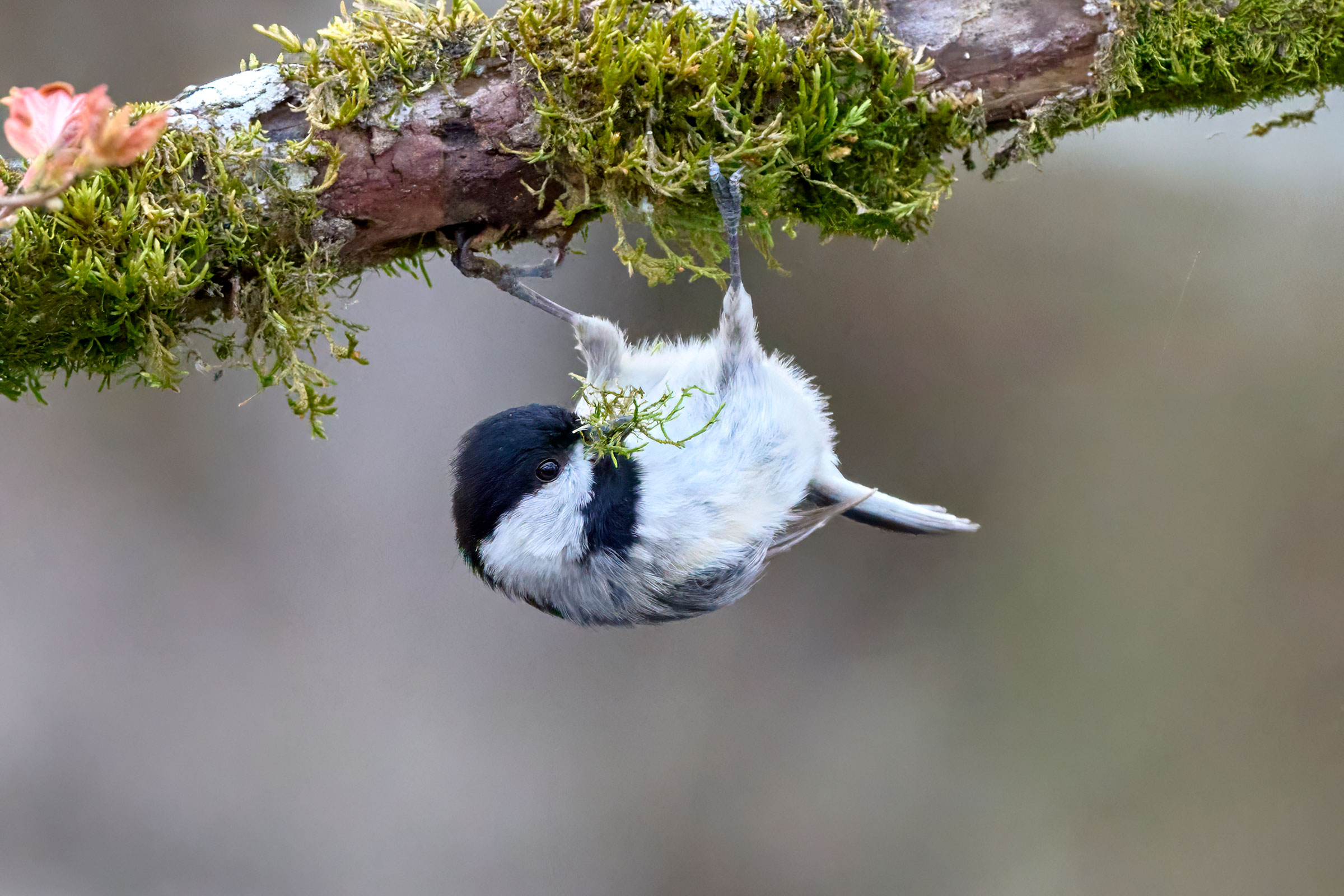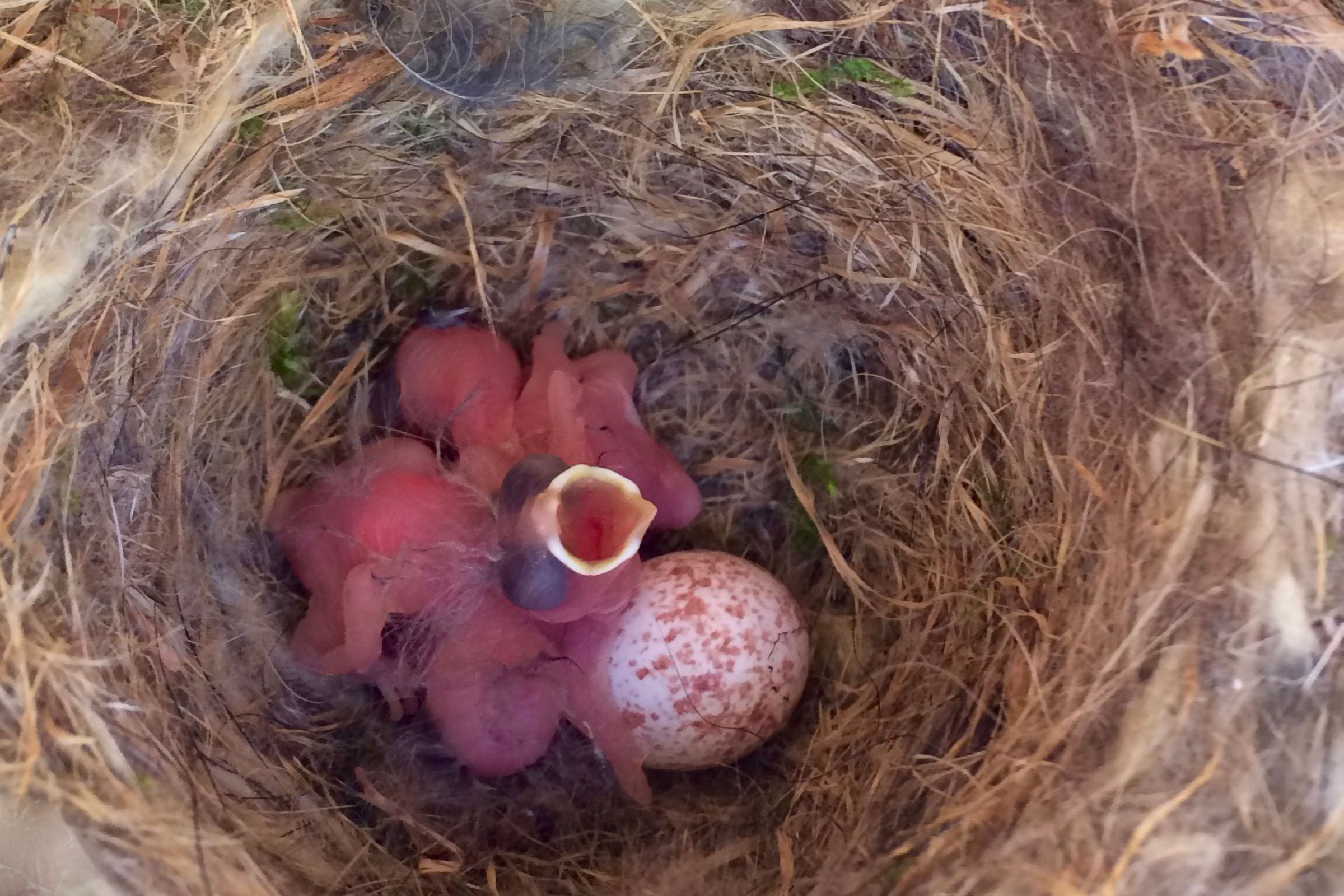Introduction
The Carolina Chickadee is a feisty regular visitor to Virginia bird feeders that also caches seeds and other food items under natural conditions (Mostrom et al. 2020). They inhabit a wide range of forested habitats, including coniferous, deciduous, or mixed forests in riparian and upland areas, where they require cavities in trees or dead snags for nesting (Mostrom et al. 2020). In the Mountains and Valleys region, the species can be easily confused with its “look-alike species,” the Black-capped Chickadee (Poecile atricapillus), and their ability to adopt songs of other birds and overlapping territories make differentiating them even more difficult (Sattler and Braun 2000; Rottenborn and Brinkley 2007).
Breeding Distribution
The Carolina Chickadee is well distributed throughout the state, though less likely to occur in high-elevation forests of the Mountains and Valley region and some coastal areas (Figure 1). Given their presence across the state in a range of habitats, Carolina Chickadees are more likely to occur in blocks with a greater amount of forest edge habitats and a greater number of habitat types. However, they are less likely to be found on agricultural lands.
Due to model limitations, the Carolina Chickadee’s distribution during the First Atlas and the change between the two Atlas periods could not be modeled (see Interpreting Species Accounts). For more information on its distribution during the First Atlas, please see the Breeding Evidence section.
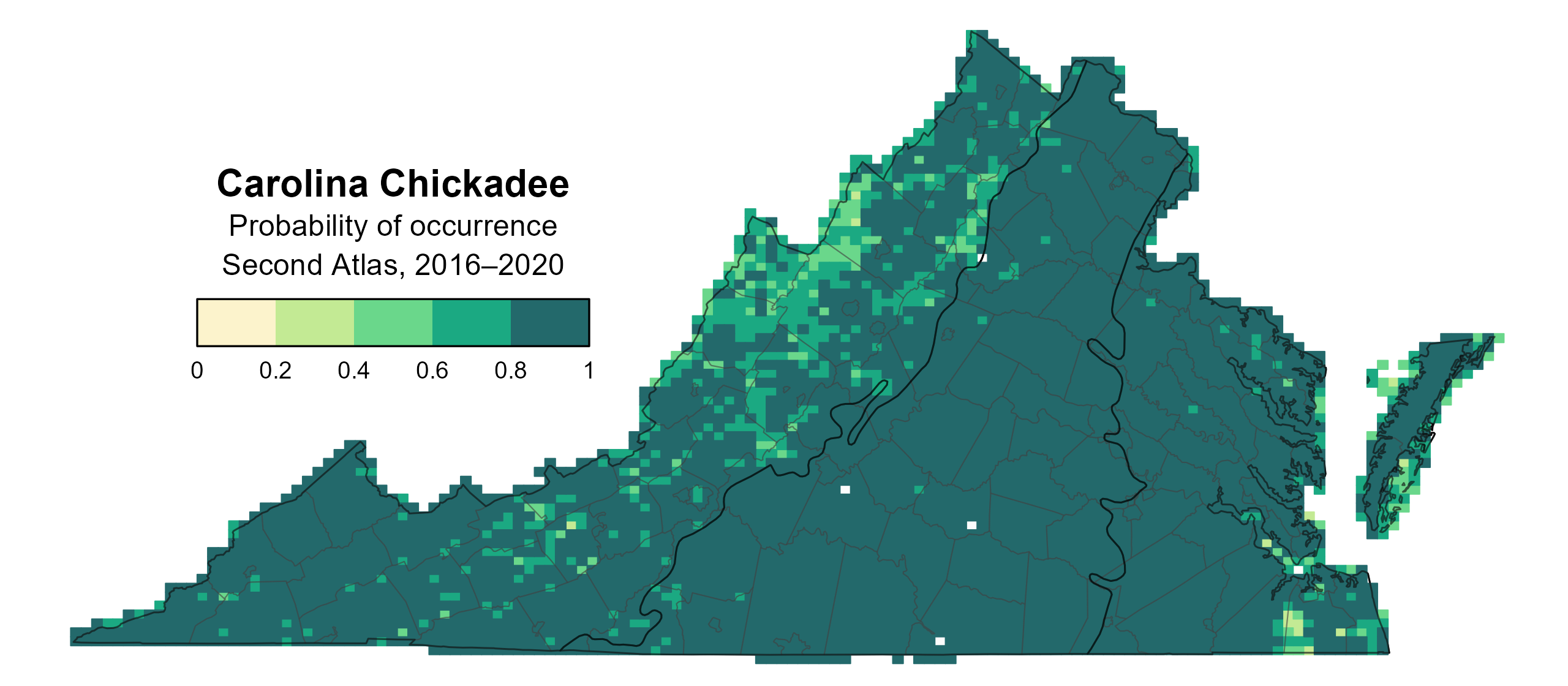
Figure 1: Carolina Chickadee breeding distribution based on probability of occurrence (Second Atlas, 2016–2020). This map indicates the probability that this species will occur in an Atlas block (an approximately 10 mi2 [26 km2] survey unit) based on environmental (including habitat) factors and after adjusting for the probability of detection (variation in survey effort among blocks).
Breeding Evidence
Carolina Chickadees were confirmed breeders in 794 blocks and 122 counties and were found to be probable breeders in one additional county (Figure 2). During the First Atlas, breeding confirmations were distributed throughout the state and in similar areas to those during the Second Atlas (Figure 3).
The earliest breeding confirmation was recorded on March 1 when an occupied nest was observed. Breeding observations continued to be documented into September. Breeding was confirmed primarily through observations of occupied nests (March 1 – August 5), adults feeding young (March 31 – September 8), nests with young (April 10 – August 2), and recently fledged young (April 19 – August 29) (Figure 4).
For more general information on the breeding habits of this species, please refer to All About Birds.
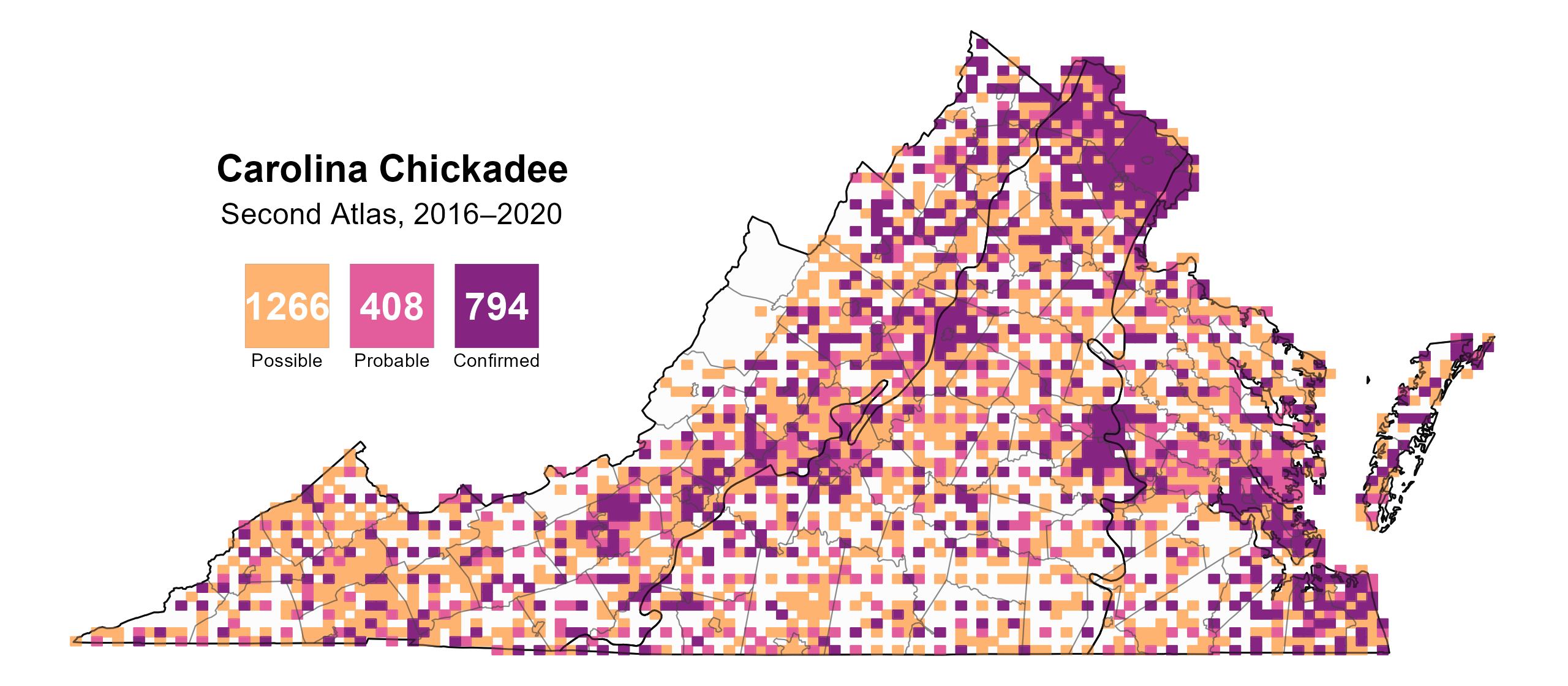
Figure 2: Carolina Chickadee breeding observations from the Second Atlas (2016–2020). The colored boxes illustrate Atlas blocks (approximately 10 mi2 [26 km2] survey units) where the species was detected. The colors show the highest breeding category recorded in a block. The numbers within the colors in the legend correspond to the number of blocks with that breeding evidence category.
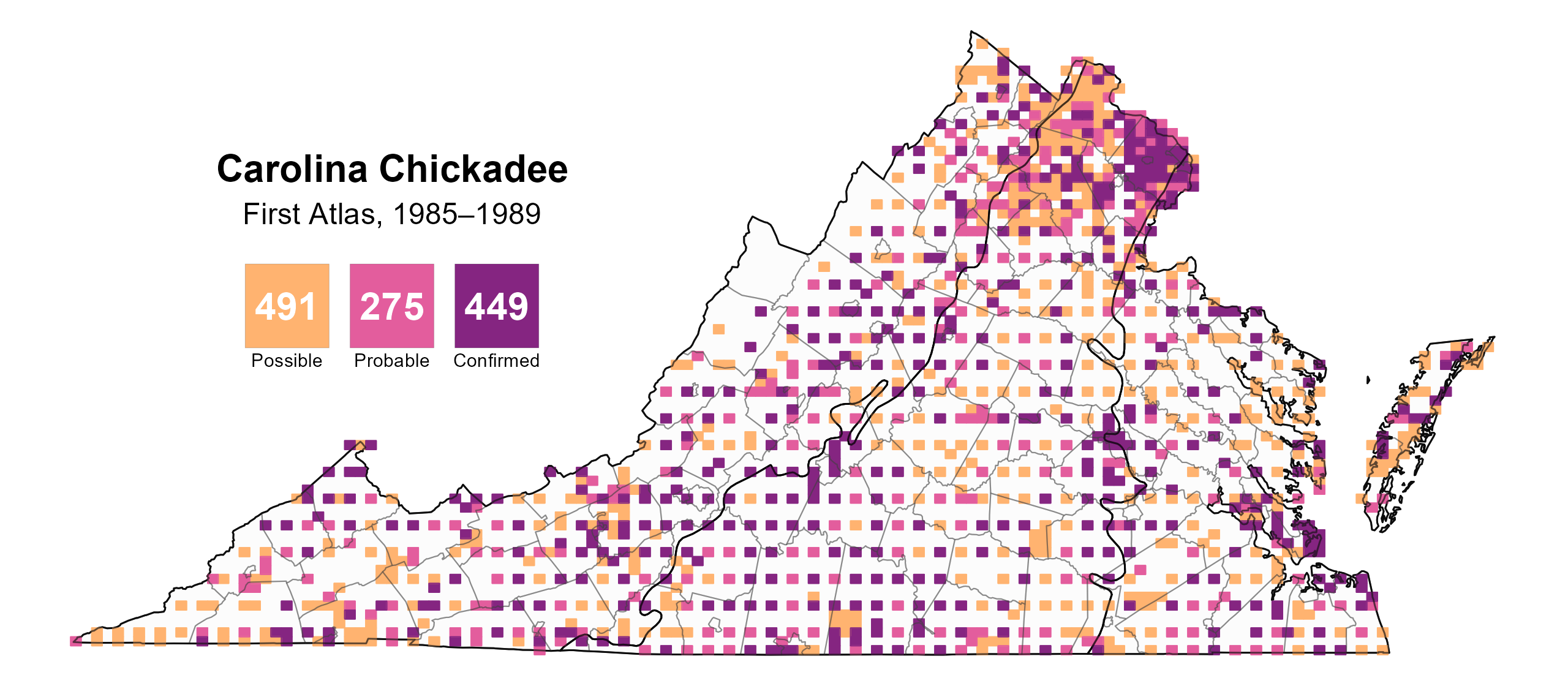
Figure 3: Carolina Chickadee breeding observations from the First Atlas (1985–1989). The colored boxes illustrate Atlas blocks (approximately 10 mi2 [26 km2] survey units) where the species was detected. The colors show the highest breeding category recorded in a block. The numbers within the colors in the legend correspond to the number of blocks with that breeding evidence category.

Figure 4: Carolina Chickadee phenology: confirmed breeding codes. This graph shows a timeline of confirmed breeding behaviors. Tick marks represent individual observations of the behavior.
Population Status
Carolina Chickadee relative abundance was estimated to be lower in the heavily forested areas of the Mountains and Valleys region and coastal areas, with consistently high abundance elsewhere (Figure 5).
The total estimated Carolina Chickadee population in the state is approximately 1,526,000 individuals (with a range between 1,211,000 and 1,924,000). This estimate makes the Carolina Chickadee the ninth most abundant bird of those for which abundance was modeled in Virginia. Based on the North American Breeding Bird Survey (BBS), the Carolina Chickadee population declined by a significant 0.8% annually from 1966–2022 in Virginia, and between Atlas periods, Carolina Chickadees decreased by a significant 1.4% per year from 1987–2018 (Hostetler et al. 2023; Figure 6).
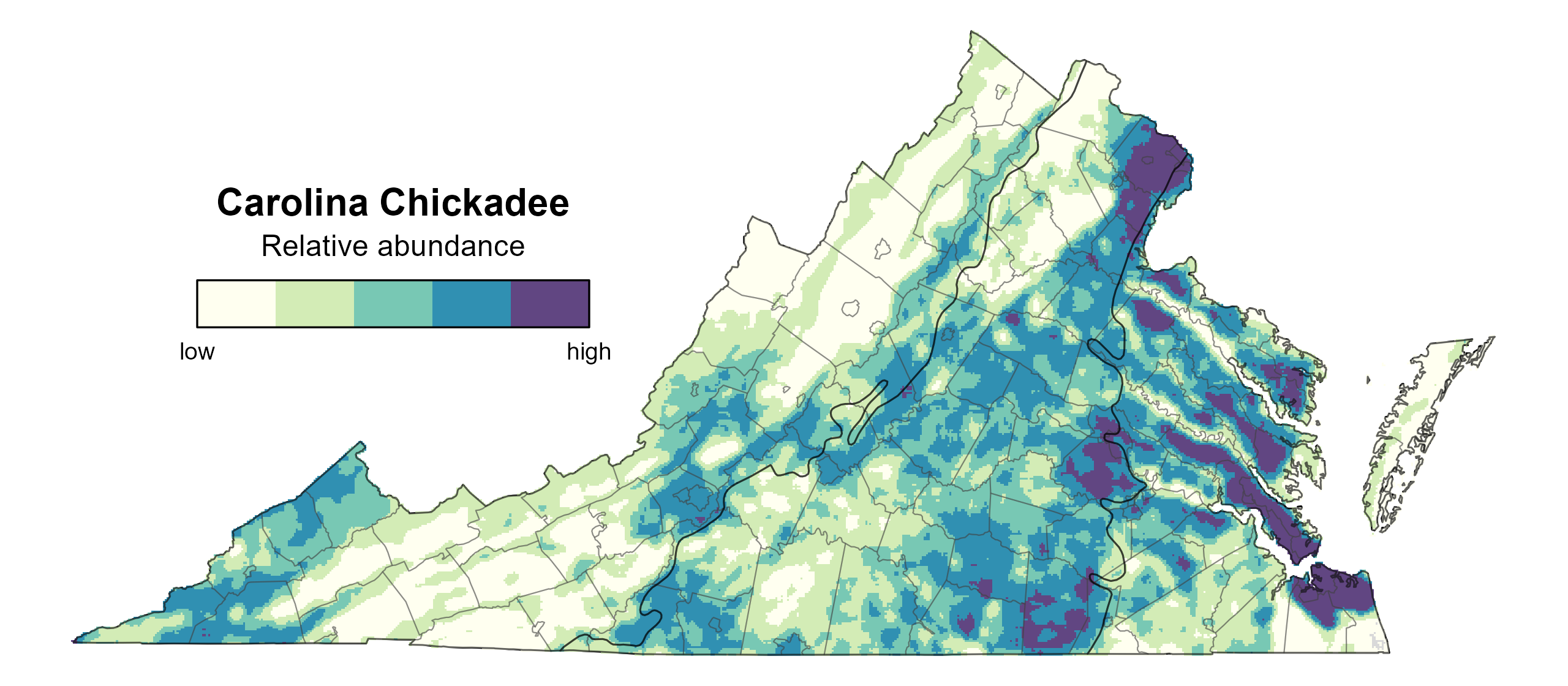
Figure 5: Carolina Chickadee relative abundance (Second Atlas, 2016–2020). This map indicates the predicted abundance of this species at a 0.4 mi2 (1 km2) scale based on environmental (including habitat) factors. Abundance values are presented on a relative scale of low to high.

Figure 6: Carolina Chickadee population trend for Virginia as estimated by the North American Breeding Bird Survey. The vertical axis shows species abundance; the horizontal axis shows the year. The solid line indicates the estimated population trend; there is a 97.5% probability that the true population trend falls between the dashed lines. The shaded bars indicate the First and Second Atlas periods.
Conservation
Despite a decline in population since the mid-1990s in Virginia, Carolina Chickadees are not considered a species of conservation concern, as they remain common, widespread, and very abundant in the state.
Interactive Map
The interactive map contains up to six Atlas layers (probability of occurrence for the First and Second Atlases, change in probability of occurrence between Atlases, breeding evidence for the First and Second Atlases, and abundance for the Second Atlas) that can be viewed one at a time. To view an Atlas map layer, mouse over the layer box in the upper left. County lines and physiographic regional boundaries (Mountains and Valleys, Piedmont, and Coastal Plain) can be turned on and off by checking or unchecking the box below the layer box. Within the map window, users can hover on a block to see its value for each layer and pan and zoom to see roads, towns, and other features of interest that are visible beneath a selected layer.
View Interactive Map in Full Screen
References
Foote, J. R., D. J. Mennill, L. M. Ratcliffe, and S. M. Smith (2020). Black-capped Chickadee (Poecile atricapillus), version 1.0. In Birds of the World (A. F. Poole, Editor). Cornell Lab of Ornithology, Ithaca, NY, USA. https://doi.org/10.2173/bow.bkcchi.01.
Hostetler, J. A., J. R. Sauer, J. E. Hines, D. Ziolkowski, and M. Lutmerding (2023). The North American breeding bird survey, analysis results 1966–2022. U.S. Geological Survey, Laurel, MD, USA. https://doi.org/10.5066/P9SC7T11.
Mostrom, A. M., R. L. Curry, and B. Lohr (2020). Carolina Chickadee (Poecile carolinensis), version 1.0. In Birds of the World (A. F. Poole and F. B. Gill, Editors). Cornell Lab of Ornithology, Ithaca, NY, USA. https://doi.org/10.2173/bow.carchi.01.
Rottenborn, S. C., and E. S. Brinkley (2007). Virginia’s birdlife: an annotated checklist, 4th edition. Virginia Society of Ornithology.

